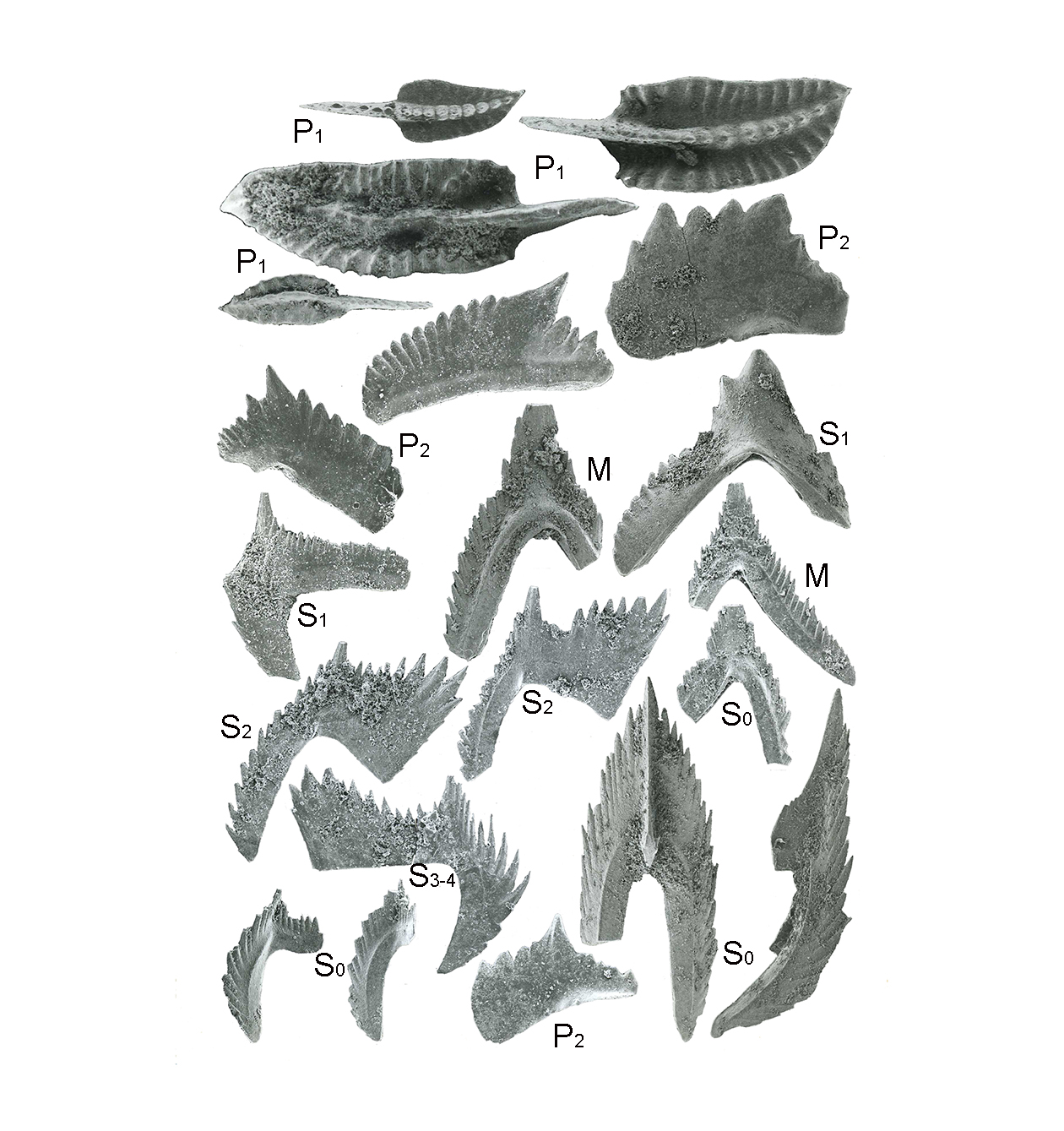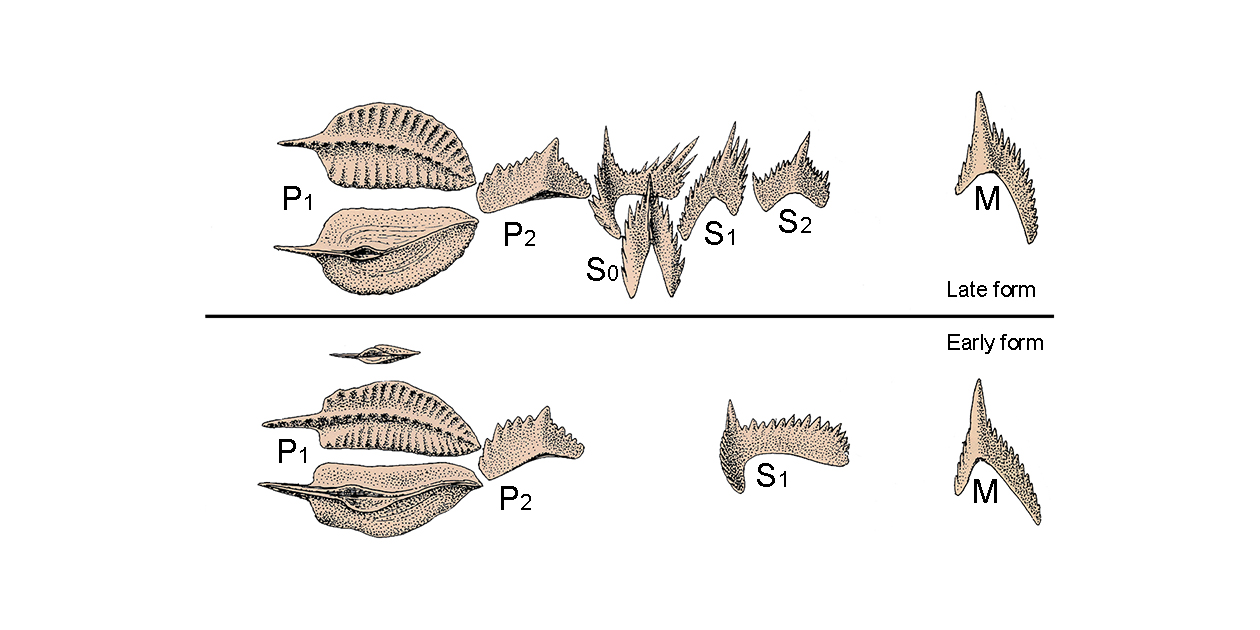Pinacognathus sp.
Sugerowana cytacja: Moczyński 2016. Pinacognathus sp. . Ikonoteka (http://ikonoteka.paleo.pan.pl/xwiki/bin/view/Species/Pinacognathus+sp)
Diagnoza
Porównanie Unlike associated platform elements of other polygnathids, juvenile P1 elements show a widely gaping basal cavity that uniformly narrows towards the dorsal ('anterior') end of the element and a relatively robust platform develops at some distance above the element base. All this gives to the P1 elements of this species an appearance resembling Devonian 'Siphonodella' praesulcata,to which it seems related. The platform in some specimens is very low with respect to the base and remains very thin and relatively flat, which makes them transitional to associated elements classified as Polygnathus fornicatus. The only difference between transitional elements of these species thus remains the shape of the basal cavity (pit). The P2 elements with glossy surface and a strong tendency to conceal denticles developed at earlier histogenetic stages may represent the same apparatus. They are very variable within each sample but most specimens have their denticulation rather well developed. Autekologia Występowanie geograficzne Dzikowiec in the Sudetes Zasięg czasowy Tournaisian Materiały muzealne ZPAL Literatura Dzik, J. 1997. Emergence and succession of Carboniferous conodont and ammonoid communities in the Polish part of the Variscan sea. Acta Palaeontologica Polonica 42, 57-170. |
|


